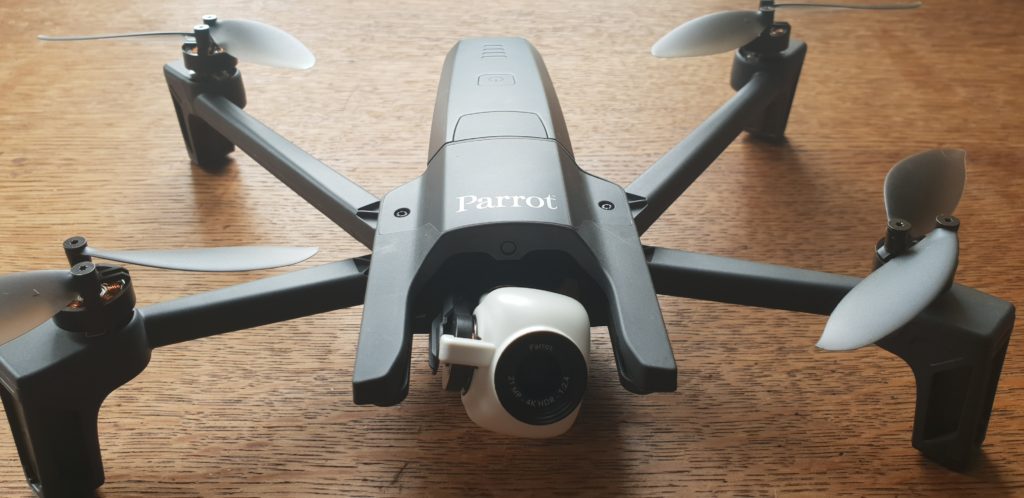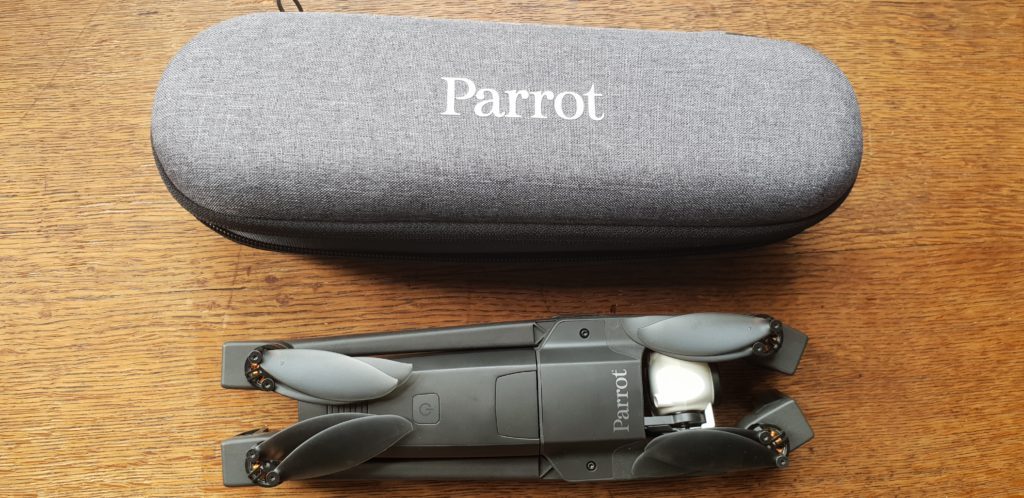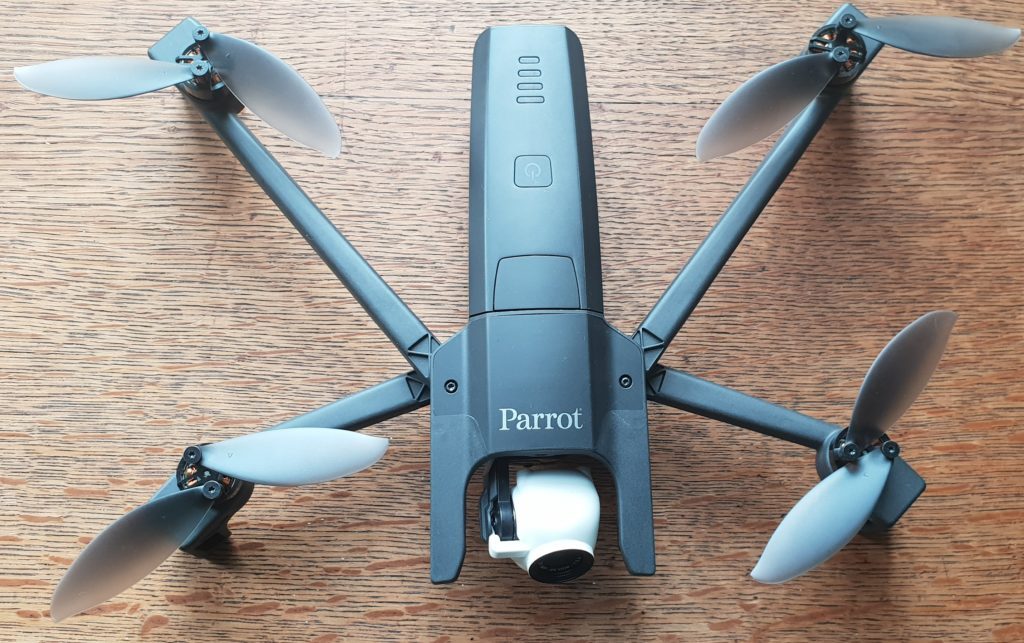When Parrot unveiled the new ANAFI drone back in June it felt like a big moment. Finally, a worthy competitor had arrived to rival the DJI Mavic Air and, more broadly, the Chinese manufacturer’s growing dominance.
Later that month I went to meet some of the Parrot team in London, got a demo of the new drone, received some interesting answers re the ANAFI’s lack of obstacle avoidance and took away a unit to review.
So here we are a few weeks down the line. Of the many things that have become clear about the ANAFI, the most obvious is simply: This is a very good drone that hits the mark across most of the criteria important to recreational pilots and aerial photographers.
The camera, flight-time and responsiveness are all as good as you could hope for from a drone in this price bracket ($699/ £630).
But there is still some uncertainty, maybe because I’ve flown the Mavic Air and own a Mavic Pro. Both of those drones have set the standards that the rest of the industry has to compete with. The ANAFI is an interesting addition to the market with a few features that help it stand out from the crowd, but I can’t help but feel that it’s missing the finishing touches required to come out on top against DJI’s best.
So let’s get into it…

The Camera
The ANAFI has a Sony IMX230 sensor, an Ambarella video processor and can shoot 21MP photos and video in 4K. It’s got 3-axis stabilization and, most interestingly, 180 degrees of vertical tilt. This means you can fly directly under objects and film them from below. The camera also allows for 2.8X lossless zoom, which works as you’d expect and is a unique feature for a drone of this size.
All in all, the performance of the camera is excellent. Images are sharp, videos are crisp in all light conditions and there isn’t much to complain about. It certainly compares favorably to the DJI Mavic Air in this regard. There isn’t much to choose between them.
However, it’s with the software associated with the camera that I ran into my first issues. One of the ANAFI’s statement features is the HDR mode which, at the touch of a button, promises to transform your shots by balancing the exposure between bright and dark areas better, particularly in low light conditions.
The idea is that more detail will be captured to save you time in post-processing.
But in reality, I found the HDR option to be disappointing. Sunset shoots with the potential to be magical came out grainy, with far too much noise. And the color saturation was all over the place. It was also unclear when HDR mode was enabled – the option seems to come and go as it pleases on the home screen. No doubt these software issues can be fixed without too much work, which begs the question: why they are still there?
My best shots with the ANAFI were filmed without HDR enabled. If you want to pump up the saturation, you’re better off doing it in post.
The Parrot ANAFI: Performance
I found the ANAFI to be a mixed bag in terms of performance. But for what I’d consider to be the most important factors, it’s well ahead of DJI’s Mavic Air.
First of all we have the thing that all drone pilots are concerned with: flight time. The ANAFI boasts 25 minutes in the air on a single battery, which I found to be accurate. That figure from Parrot was recorded in challenging conditions, so you could even squeeze an extra few seconds out of the smart polymer lithium battery in good flying conditions.
That’s significantly better than the DJI Mavic Air. Those extra minutes make a big difference.
The ANAFI is also the quietest drone I have flown. You don’t get the same harsh whine that comes with the DJI Mavic Air or Pro, and I’d say it’s still quieter than the Pro with noise reducing props. This is a feat that shouldn’t be understated. No drone pilot wants to attract a load of attention while flying. The more unnoticed you can be, the better.
In terms of speed, range and manoeuvrability, the ANAFI does enough without being spectacular. It can hit speeds of 33 mph and withstand winds of 31 mph. You can also customize settings, from the incline of the drone to its rotation speed and camera tilt sensitivity.
One nice touch is having the option to flick between two speeds modes – Film and Sport – on the home screen. When shooting aerial videos, it’s unlikely that you’re going for that boy racer effect. Having smooth and steady flight available with a single touch is a great option.
Now to the frustrations.
The ANAFI is equipped with dual-band antennas (2.4GHz & 5GHz) to connect the drone with the Skycontroller 3 remote control. The transmission system uses Wi-Fi protocols developed by Parrot, and promises an operating range of up to 2.48 miles. However, several times during flight the connection between the drone and controller cut out and warning messages would appear.
On other occasions the return to home function would be activated. This didn’t happen because there were buildings or other obstacles blocking the signal, or because I was pushing the range to the limit. We’re talking hundreds of metres rather than multiple miles. Losing control of your drone at range isn’t a nice feeling, particularly when there is no obstacle avoidance system to watch your back.
Trying to adjust the connectivity is a needlessly complicated procedure in one of the app’s sub menus. For a long time I thought that the poor connectivity was because the drone was connected to the phone rather than the remote control. I struggled to use the app to find out either way. I still don’t know what the cause was.
This kind of thing becomes a theme with the ANAFI: it’s in the detail that this drone lets you down. Another example is instability and drift during flight. Often I found that what should be a precision hover isn’t as stable as it needs to be, regardless of the weather conditions.
One of my test shots was to rise directly above a swimming pool with the camera pointed down vertically. Even a little bit of drift can ruin cool shots like that.
An interesting touch from Parrot is that the drone starts recording video as soon as it takes off. This feature could put an end to the times when you get halfway through a shoot and realize you haven’t pressed record. But it could also mean that you get a load of unwanted footage on your memory card.
On one occasion, no video recorded at all and nothing was saved onto the SD card. Whether this was a software issue or related to the fiddly SD card slot under the battery, I don’t know.

Portability and Usability
When I spoke with Parrot in June, their pitch was all about accessibility and ease of use, about how the ANAFI was a drone that anybody could pick up and fly.
To an extent Parrot has delivered on that promise. The ANAFI is incredibly portable. Its foldable wings are retracted in a much more intuitive manner than DJI’s foldable options. And it fits nicely in the case the drone comes with, about the size and shape of a water bottle.
On top of that, the battery and controller can both be charged directly through a USB-C cable, so you can now hit the road without lugging around a huge power cable and charge up directly through your smartphone charger or car.
However, the controller is big and clunky. If the drone itself feels like a prosumer/professional piece of equipment, the controller feels like a toy. More than anything, its size undermines the whole portability appeal that Parrot is going for. If you’re going to have a clunky controller, why not ship a case that carries them both?
No doubt Parrot will point to the fact that you can pilot the ANAFI and take advantage of its autonomous flight modes with only your smartphone. But come on, we all know by now that flying through your phone’s touchscreen is generally an awful experience.
Another downside on the usability/accessibility front is the ANAFI’s lack of obstacle avoidance. When I spoke with Parrot in June they were keen to spin this omission as a safety feature in itself: pilots flying without the luxury of obstacle avoidance would have to fly more responsibly by default.
While that’s an interesting argument, I felt a lot more on edge flying the ANAFI than is ideal. No obstacle detection also made asking the drone to perform some of the autonomous flight modes a nervous ordeal. Unless you’re out in an open field or somewhere with barely any obstacles, some of these modes are a risk.
Finally we come to what will be a major point of annoyance for some Parrot customers. Most drones on the market – certainly those from Parrot’s main competitor, DJI – come with tracking modes and flight planning tools as standard. With the ANAFI, pilots have to pay extra to unlock those features in the ironically named Freeflight App.
The Follow Me and Flight Plan modes will set you back $17.99 each. Why Parrot, why?!

Final Thoughts: is the Parrot ANAFI A Drone With An Identity Crisis?
The ANAFI is, without doubt, an impressive drone with key features – namely its camera and flight time – that make it a genuine contender in that gray area between enthusiast and professional.
But I can’t help but feel let down by some of ANAFI’s contradictions. So much thought and work has clearly gone into R&D to give this drone a market-leading flight time for a model of its size and a camera that competes with more expensive competitors.
But the software doesn’t back it up. The HDR feature needs work, the flight stability isn’t as precise as I’d hoped and there seem to be a few bugs here and there that undermine confidence in the system as a whole. The good news for Parrot is that these software hiccups can be ironed out.
The most frustrating thing about the ANAFI is that this is clearly a drone with an identity crisis. If it’s for beginners, why didn’t Parrot push the boat out to include obstacle avoidance technology? If it’s for confident pilots, why is Parrot charging them extra for additional flight modes that should come as standard? And if you’re going to work so hard to develop a drone that’s lightweight and ultra-portable, why undermine that whole process by throwing in a clunky toy controller?
As is the way in competitive manufacturing, Parrot’s ANAFI was always going to be judged by how it stands up to DJI’s Mavic models. As a standalone piece of technology, there’s no doubting the ANAFI as an engineering feat. But, annoyingly for those who hoped it would push DJI’s drones and the hardware market to greater heights, it falls just short of doing so.
Malek Murison is a freelance writer and editor with a passion for tech trends and innovation. He handles product reviews, major releases and keeps an eye on the enthusiast market for DroneLife.
Email Malek
Twitter:@malekmurison
Subscribe to DroneLife here.







[…] kits) expands, so do the alternatives. RIIS’ greatest identified partnership is with Parrot ANAFI: however new drone firms are rising on a regular basis. “For the time being, they’re aren’t […]